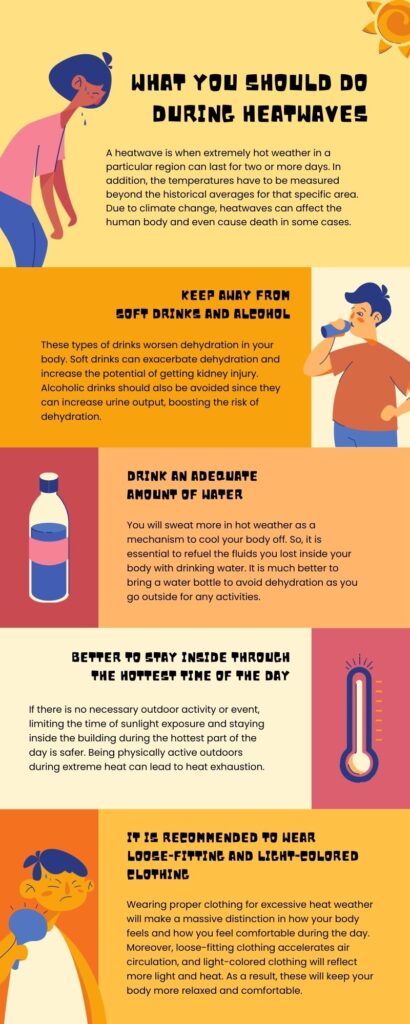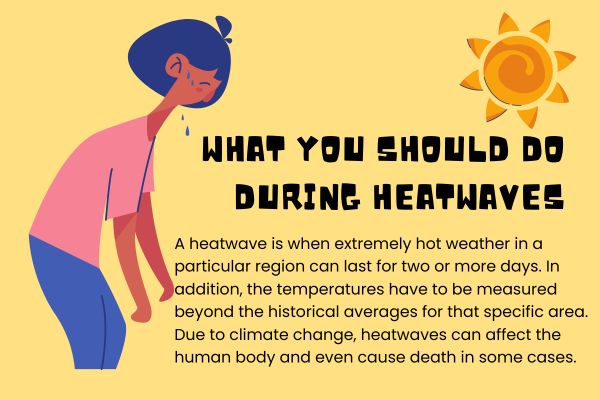Heat Wave in Bangladesh: Causes, Impacts
Heat waves are a common occurrence in Bangladesh, especially during the summer months. With temperatures rising as high as 40°C or more, the heat can be unbearable for many people, causing various health hazards and environmental issues. In this article, we will discuss the causes, impacts, and precautions of heat wave in Bangladesh.
Why Heat Wave in Bangladesh is so hot in Bangladesh?
Bangladesh is located in the tropical region of the world, which means that it receives abundant sunlight throughout the year. During the summer months, the intensity of the sun’s rays increases, causing the temperature to rise. Additionally, the country’s topography and geography also contribute to the hot weather conditions. Bangladesh is a low-lying deltaic country, which means that it is prone to flooding and has a high humidity level. This, in turn, makes the heat even more unbearable.
What is the hottest Bangladesh has ever been?
According to the Bangladesh Meteorological Department, the highest temperature ever recorded in Bangladesh was 42.2°C in 2002. However, many experts believe that the actual temperature may have been even higher due to the lack of proper monitoring equipment.
Which is the hottest place in Bangladesh?
The southwestern region of Bangladesh is known for its hot and humid weather conditions. The districts of Khulna, Satkhira, and Jessore are some of the hottest places in Bangladesh, with temperatures often exceeding 40°C during the summer months.
What is a heat wave in Bangladesh?
A heat wave is a prolonged period of excessively hot weather, which is often accompanied by high humidity levels. In Bangladesh, a heat wave is defined as a period of at least two consecutive days where the maximum temperature is 40°C or more in the plains and 36°C or more in the hilly regions.
When will the heat wave end in Bangladesh?
Heat waves in Bangladesh typically occur from April to September, with the peak period being May and June. The duration of the heat wave varies from year to year, depending on various weather factors. In general, the heat wave subsides with the onset of the monsoon season, which usually begins in June.

How hot does it get in Bangladesh?
During the summer months, the temperature in Bangladesh can reach as high as 42°C or more in some areas. However, the average temperature during the hottest months of the year is around 38-40°C in the plains and 32-36°C in the hilly regions.
What to do when there’s a heat wave?
When there’s a heat wave, it is essential to take necessary precautions to avoid any health hazards. Some of the things that people can do during a heat wave include staying hydrated by drinking plenty of water, avoiding going out during the hottest part of the day, wearing loose and light-colored clothes, and staying in well-ventilated areas.
Heat wave equation
The heat wave equation is a measure of the heat index, which is used to determine the level of discomfort caused by the weather conditions. The heat index takes into account the temperature and humidity levels and provides a measure of how hot it feels.
Heat wave explained: perspective of Heat Wave in Bangladesh
A heat wave is a period of excessively hot weather, which lasts for an extended period. Heatwaves are caused by various weather factors, such as high pressure, low humidity, and lack of wind. Heatwaves can cause several health hazards, environmental issues, and economic losses.
A heat wave is a prolonged period of excessively hot weather that occurs when a system of high atmospheric pressure moves into an area and locks in the heat. It is typically characterized by high temperatures, high humidity, and little or no precipitation. Heat waves can occur anywhere in the world, but they are particularly common in areas with subtropical or tropical climates.
Heat wave information for students:
Students should be aware of the dangers of heat waves, which can be particularly dangerous for young children, the elderly, and people with certain medical conditions. It is important for students to stay hydrated, wear loose-fitting and light-colored clothing, and avoid outdoor activities during the hottest parts of the day. Schools should also take steps to ensure that classrooms and other indoor spaces are properly ventilated and air-conditioned during heat waves.
Where is heat wave coming from?
Heat waves can be caused by a number of factors, including changes in weather patterns and climate change. They can also be caused by human activities such as deforestation and urbanization, which can increase the amount of heat absorbed by the earth’s surface. In some cases, heat waves can be caused by natural phenomena such as El Niño, a periodic warming of the Pacific Ocean that can affect weather patterns around the world. It is important for scientists to continue studying the causes of heat waves in order to better understand and mitigate their impacts on human health and the environment.
Heat wave information for students:
A heat wave is a period of prolonged and extremely hot weather, which can cause discomfort and pose health risks to people, particularly the elderly, young children, and those with preexisting medical conditions. Heat waves can also cause damage to crops and infrastructure.
Where is a heat wave coming from?
Heat waves are typically caused by a high-pressure system that traps hot air close to the ground, preventing it from escaping into the atmosphere. These systems can be caused by a number of factors, including climate change, urbanization, and land use changes.
During a heat wave, it’s important to take precautions to stay safe and cool, such as staying hydrated, avoiding outdoor activities during the hottest parts of the day, and seeking out air-conditioned spaces if possible. It’s also important to check in on vulnerable members of the community, such as elderly neighbors or those with preexisting medical conditions.
Here’s a table of some recommended actions to take during a heat wave in Bangladesh:
| Action
|
Description
|
|---|---|
| Stay indoors | Stay indoors as much as possible during the hottest parts of the day, typically between 11 am and 4 pm. |
| Wear loose-fitting clothes | Wear loose-fitting, lightweight clothing made of breathable fabrics such as cotton. |
| Stay hydrated | Drink plenty of fluids, such as water and coconut water, to stay hydrated. Avoid drinks that contain caffeine or alcohol. |
| Use a fan or air conditioner | Use a fan or air conditioner to help cool down your home or workplace. If you don’t have access to an air conditioner, use a fan or cool cloth to stay cool. |
| Take cool showers | Take cool showers or baths to help lower your body temperature. |
| Avoid strenuous activity | Avoid strenuous activities, such as exercise or manual labor, during the hottest parts of the day. |
| Check on vulnerable individuals | Check on elderly individuals, young children, and those with chronic health conditions to ensure they are staying cool and hydrated. |
| Keep an eye on the weather | Keep track of weather updates and warnings from local authorities. |
| Seek medical attention if necessary | Seek medical attention immediately if you experience symptoms such as high body temperature, dizziness, nausea, or headache. |
These actions can help individuals stay safe and healthy during a heat wave in Bangladesh, where high temperatures and humidity levels can be particularly dangerous.
Heat waves are becoming increasingly common in Bangladesh, and they pose a significant threat to the health and well-being of the country’s residents. With temperatures regularly exceeding 40 degrees Celsius (104 degrees Fahrenheit) during the summer months, it’s important to understand the key challenges associated with heat waves and how they can be addressed. One of the most significant challenges in Bangladesh is the high density of the population, which can exacerbate the effects of extreme heat.
Bangladesh is one of the most densely populated countries in the world, with an estimated population of over 160 million people living in an area of just 147,570 square kilometers. This high density of the population lead to a range of challenges during a heat wave, including limited access to resources such as water and electricity, and increased risk of heat-related illness.
One of the biggest challenges associated with high density of the population during a heat wave is the lack of access to cool and shaded spaces. With so many people living in close proximity to one another, it can be difficult to find cool and shaded areas where people can seek refuge from the heat. This can lead to overcrowding in public spaces, such as parks and community centers, which can increase the risk of heat-related illness.
Another challenge associated with high density of the population during a heat wave is the limited availability of water. With so many people living in a small area, it can be difficult to ensure that everyone has access to clean and safe drinking water. This can be particularly problematic during a heat wave when people need to stay hydrated to avoid heat exhaustion and other heat-related illnesses.
To address the challenges associated with high density of the population during a heat wave, it’s important to take a multi-faceted approach.
This may include:
- Promoting the use of cooling centers: By promoting the use of cooling centers in densely populated areas, individuals can seek refuge from the heat and avoid overcrowding in public spaces.
- Improving access to water: By improving access to clean and safe drinking water, individuals can stay hydrated and reduce their risk of heat-related illness.
- Providing education on heat safety: By providing education on heat safety, individuals can learn how to protect themselves and their families during a heat wave.
- Encouraging the use of green spaces: By encouraging the use of green spaces, such as parks and community gardens, individuals can access cool and shaded areas during a heat wave.
- Promoting sustainable urban planning: By promoting sustainable urban planning, cities can be designed to incorporate more green spaces, reduce the urban heat island effect, and promote access to resources such as water and electricity.
In conclusion, high density of the population is a significant challenge during a heat wave in Bangladesh. However, by taking a multi-faceted approach that includes promoting the use of cooling centers, improving access to water, providing education on heat safety, encouraging the use of green spaces, and promoting sustainable urban planning, we can help protect the health and well-being of individuals living in densely populated areas during extreme heat events. By working together, we can create safer and more resilient communities that are better equipped to face the challenges of a changing climate.
